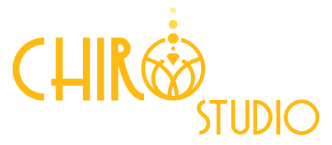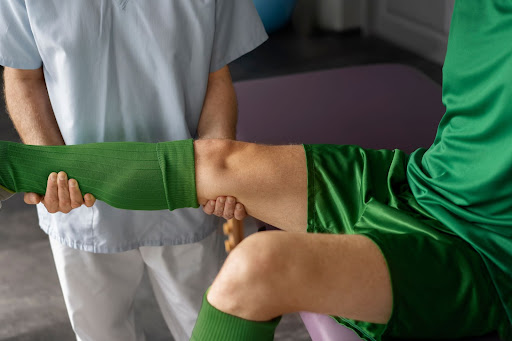Athletes are no strangers to pain and discomfort. They push their bodies to the limit, training rigorously day in and day out, and putting enormous stress on their muscles and joints. One common condition that many athletes face is sciatica, which is characterized by pain that radiates along the sciatic nerve from the lower back down to the legs.
Sciatica is a condition that affects a significant number of individuals across the world. Athletes, in particular, are prone to this condition, as their rigorous physical activities put them at risk of developing it. It’s important to note that sciatica can have a significant impact on an athlete’s quality of life, and it should not be ignored. Seeking medical attention early on can help prevent the condition from worsening and potentially causing long-term damage. With the right approach and support, athletes can manage their sciatica pain and continue to perform at their best.
What is Sciatica?
Sciatica is a medical condition that affects the sciatic nerve. The sciatic nerve is the longest nerve in the body and runs from the lower back, through the hips, buttocks, and down each leg. The nerve’s primary function is to provide sensory and motor functions to the lower limbs. When the nerve is compressed or irritated, it can cause pain, numbness, tingling, and weakness in the lower back, hips, legs, and feet. Sciatica is not a diagnosis but a symptom of an underlying condition.
Understanding Sciatica in Athletes
The first step to managing sciatica pain in athletes is to understand the condition itself. In this section, we will discuss the causes of sciatica in athletes, the symptoms they may experience, and how sciatica can impact their performance.
Causes of Sciatica in Athletes
Athletes are at risk for sciatica due to the high impact and repetitive nature of many sports. Some of the most common causes of sciatica in athletes include:
- Herniated Discs: When the soft, jelly-like material inside a spinal disc protrudes through a crack in the outer layer, it can put pressure on the sciatic nerve.
- Piriformis Syndrome: The piriformis muscle, which runs from the lower spine to the top of the thigh bone, can become tight and inflamed, causing compression of the sciatic nerve.
- Spinal Stenosis: This condition occurs when the spinal canal narrows, putting pressure on the nerves that travel through it.
- Spondylolisthesis: This is a condition in which one vertebra slips forward over another, causing compression of the spinal nerves.
Symptoms of Sciatica in Athletes
Athletes with sciatica may experience a range of symptoms, including:
- Pain: This is usually felt in the lower back, hips, buttocks, and/or legs. The pain may be sharp or dull and may be accompanied by tingling or numbness.
- Weakness: Athletes with sciatica may experience weakness in the affected leg, making it difficult to walk or perform certain movements.
- Loss of Coordination: In severe cases, sciatica can cause a loss of coordination and balance.
How Does Sciatica Affect Athletes?
Athletes are at risk of developing sciatica due to the nature of their physical activities. Running, jumping, and other high-impact activities put a strain on the lower back and can lead to injuries that cause sciatica. Additionally, athletes who play sports that require them to bend, twist, or rotate their spine, such as football or golf, are at a higher risk of developing the condition.
Sciatica can be debilitating for athletes, especially if left untreated. The pain and discomfort can make it difficult to perform daily activities, let alone participate in sports. Athletes with sciatica may experience difficulty standing, walking, or sitting for extended periods. Additionally, the pain and discomfort can affect their performance and lead to decreased athletic ability.
Managing Sciatica in Athletes in Cocoa
Fortunately, there are several ways to manage sciatica pain in athletes. Here are a few methods that can help athletes stay active and pain-free.
- Chiropractic Care
Chiropractic care can also be helpful for athletes with sciatica. A chiropractor can use spinal adjustments and other techniques to help realign the spine and alleviate pressure on the sciatic nerve. Chiropractic care in Cocoa can also help improve the range of motion, reduce inflammation, and promote healing.
- Stretching and Exercise
Stretching and exercise can help relieve sciatica pain and prevent future injury. Athletes can perform specific stretches and exercises that target the lower back and legs to strengthen the muscles and reduce compression on the sciatic nerve. It’s important to note that athletes should always consult with a medical professional before starting any new exercise program.
- Rest and Recovery
Rest is often the first line of defense against sciatica pain. Athletes should take a break from their usual training routine and focus on recovery. This may include stretching, massage, and other techniques to help relieve tension and inflammation in the affected area.
- Non-Surgical Spinal Decompression
Non-surgical spinal decompression is great for athletes with back pain or spinal problems. This gentle treatment eases pressure on spinal discs and nerves by stretching the spine, helping the healing process. Athletes can feel less pain, move better, and perform well with this therapy. It also lowers the chance of more injuries and speeds up recovery, allowing athletes to return to their sport faster. Non-surgical spinal decompression is a safer and more efficient choice than traditional surgeries with risks and longer rehab times.
How does Chiropractic Care in Cocoa help athletes with Sciatica
Chiropractic care is a non-invasive and drug-free treatment option for athletes with sciatica. Chiropractors at Chiro Studio in Cocoa focus on the musculoskeletal system and the nervous system to restore the body’s natural balance and promote healing. Here are some of the ways chiropractic care can help athletes with sciatica:
- Spinal Adjustments
Chiropractors use spinal adjustments to realign the spine and reduce pressure on the sciatic nerve. During a spinal adjustment, the chiropractor will use their hands or a specialized tool to apply a gentle force to the vertebrae, restoring their proper position. This technique helps to improve mobility, reduce inflammation, and promote healing.
- Corrective Exercises
Chiropractors may recommend corrective exercises to strengthen the muscles surrounding the affected area and improve flexibility. Corrective exercises can help reduce the pressure on the sciatic nerve, leading to a decrease in pain and discomfort. Additionally, these exercises can help prevent further injury and improve athletic performance.
- Lifestyle Modifications
Chiropractors may recommend lifestyle modifications to manage sciatica in athletes. This may include changes to diet, exercise, and posture. Chiropractors may also provide advice on proper ergonomics and recommend modifications to sports equipment to reduce the risk of injury.
- Preventative Care
Chiropractors focus on preventative care to reduce the risk of injury and promote overall health and wellness. Athletes may benefit from regular chiropractic visits to identify and address any underlying issues before they become a problem. Preventative care can help reduce the risk of injury and improve athletic performance.
- Non Surgical Spinal Decompression
Non-surgical spinal decompression is a medical technique that offers significant benefits for athletes as it helps to alleviate pain and promote the healing of issues affecting the spine. This innovative procedure utilizes a specialized table that gently stretches the spine, allowing the discs to decompress and release pressure. As athletes often put significant strain on their spinal cords due to rigorous training and high-impact sports, this therapy can be particularly beneficial in improving their overall physical health and performance.
One crucial advantage of non-surgical spinal decompression for athletes is its ability to treat various spinal conditions like herniated or bulging discs, sciatica, and facet syndrome. By relieving pressure on the spinal nerves, this therapy can help reduce inflammation and pain in the affected areas. The process promotes blood circulation, which brings critical nutrients and oxygen to damaged disc tissue, facilitating the natural healing process. In turn, athletes can recover quicker from injuries and have less downtime off the field or track.
Another significant benefit of non-surgical spinal decompression for athletes is its minimally invasive nature. Unlike surgical procedures that may have longer recovery times or risks associated with anesthesia and infection, this treatment is safe and low-risk. Most athletes can resume their normal routines within days or even hours after undergoing non-surgical spinal decompression therapy. This allows them to maintain their competitive edge while addressing any issue related to the spine promptly and effectively, leading to enhanced performance during competitions, faster recovery times from injury, and overall improved quality of life.
Chiropractic Care for Sciatica
Sciatica can be a challenging condition for athletes to manage, but with the right treatment and prevention strategies, it is possible to stay active and perform at a high level. It is important for athletes to work with their healthcare provider to determine the best course of treatment for their individual situation. By taking proactive steps to prevent sciatica and managing symptoms when they occur, athletes can continue to pursue their athletic goals and enjoy an active lifestyle.
If you are an athlete in Cocoa experiencing sciatica, it is essential to seek medical attention and work with a chiropractor at Chiro Studio to develop an effective treatment plan. With proper management, athletes can manage sciatica and continue to participate in the sports they love.




